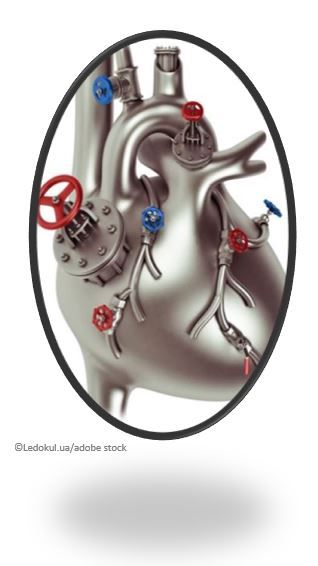- Clinical Technology
- Adult Immunization
- Hepatology
- Pediatric Immunization
- Screening
- Psychiatry
- Allergy
- Women's Health
- Cardiology
- Pediatrics
- Dermatology
- Endocrinology
- Pain Management
- Gastroenterology
- Infectious Disease
- Obesity Medicine
- Rheumatology
- Nephrology
- Neurology
- Pulmonology
US Cardiovascular Health Remains Poor, Declines Begin in Early Childhood: American Heart Association Investigators

Cardiovascular health (CVH) in the US remains well below optimal levels, with just 1 in 5 persons achieving the ideal score calculated using the American Heart Association’s (AHA) new Life’s Essential 8 construct to measure heart and brain health.
The finding that 80% of adults score at a low or moderate level of CVH comes from the first published study to use the Life’s Essential 8 algorithm to quantify CVH, made available online today in the journal Circulation.
"These data represent the first look at the cardiovascular health of the U.S. population using the AHA's new Life’s Essential 8™ scoring algorithm,” said Donald M. Lloyd-Jones, MD, ScM, who led the study and is president of the American Heart Association, and chair of the department of preventive medicine at Northwestern University’s Feinberg School of Medicine in Chicago. “Overall, the cardiovascular health of the US population is suboptimal, and we see important differences across age and sociodemographic groups.
“Overall, the cardiovascular health of the US population is suboptimal, and we see important differences across age and sociodemographic groups."
Lloyd-Jones and colleagues found that CVH declines with age beginning from ages 2 to 5 years and report that overall, suboptimal diet, physical activity, and body mass index (BMI) contribute most to lower scores.
Calculating US CVH
To calculate overall US CVH, the team conducted a cross-sectional analysis of data for persons included in National Health and Nutrition Examination Survey (NHANES) cycles from 2013 to 2018. Eligible participants were aged 2-79 years and free of CV disease.
The researchers first calculated a score (range 0 [lowest] to 100 [highest]), for each of the 8 components in the model: diet, physical activity (PA), nicotine exposure, sleep duration, body mass index (BMI), blood lipids, blood glucose, and blood pressure (BP), using published AHA definitions. An overall CVH score was then calculated for the entire cohort.
Investigators calculated prevalence estimates using sample weights and design and standard errors using standard survey procedures. CVH scores were assessed across strata of age, sex, race/ethnicity, family income, and depressive symptom status.
The final analysis included 23 409 participants comprised of 13 521 adults (aged 20-79 years) and 9888 children (ages 2-19 years), representing 201 728 000 and 74 435 000 US adults and children, respectively, authors point out. Approximately half were women; mean age among adults was 45 years and among children 10 years.
The state of US CVH
Lloyd-Jones et al report the mean CVH score using all 8 metrics for adults was 64.7 (95% confidence interval [CI], 63.9-65.6) and 65.5 (95% CI, 64.4-66.6) for the 3 metrics available (diet, PA, and BMI) among children/adolescents ages 2 through 19 years.
The AHA team found significant differences in mean overall CVH scores by sex (women 67.0 vs men 62.5), age (range 62.2 [40-64 years] to 68.7 [20-39 years]), and racial/ethnic group (range 59.7 [non-Hispanic Black] to 68.5 [non-Hispanic Asian]).
Across the 4 health behaviors and 4 health factors investigators observed the lowest mean scores for diet (36), PA (51.6), and BMI (57.5) metrics.
When they looked across demographic groups, they found large differences in mean scores for:
- Diet (range 23.8 [non-Hispanic Black] to 47.7 [those aged 65-79 years])
- Nicotine exposure (range 63.1 [men] to 85.0 [non-Hispanic Asian])
- Blood glucose (range 65.7 [those aged 65-79 years] to 88.1 [those aged 20-39 years])
- BP (range 49.5 [those aged 65-79 years] to 84.0 [those aged 20-39 years])
When they compared components by sociodemographic group, they noted large differences in mean PA (range 63.1-88.3) and BMI (range 74.4-89.4).
Children's CVH
Mean overall CVH score for children aged 2 to 19 years based on diet, PA, and BMI was 65.5 (95% CI, 64.4-66.6). Researchers found that diet scores among children were low (mean 40.6) and were progressively lower in higher age groups (from 61.1 [ages 2-5] to 28.5 [ages 12-19]). While childrens' scores were lowest for diet, they were highest for BP, glucose, and nicotine exposure at all age ranges. Compared with adults, according to the authors, scores for each metric were higher for children than for adults.

Positive health attribute
As originally conceived and measured, using the AHA 2010 Life’s Simple 7 algorithm, CVH was designed to reflect a positive health attribute that could encourage both individuals and populations to take specific actions to improve overall health outcomes as well as CVH, the authors write. The Life's Essential 8 algorithm provides a broader and also more granular approach to quantifying CVH than its predecessor and can account for greater inter-individual variation, an aspect the authors point out that may enhance sensitivity to CVH changes that arise as a result of behavior change, policy change, or other influences.
Lloyd-Jones and colleagues emphasize that there are both broad and targeted opportunities to improve CVH, from cradle to grave and along the sociodemographic continuum. They stress that "attainment or maintenance of high CVH appears to be a critical strategy for reducing health disparities in longevity and chronic diseases and for promoting health equity."
"Improving the CVH of all of the US population could have a major impact on healthy longevity, quality of life, and healthcare utilization and expenditures," they add, "with the promise of greater health equity and societal wellbeing.
Reference: Lloyd-Jones DM, Ning H, Labarthe D, et al. Status of Cardiovascular Health in US Adults and Children Using the American Heart Association’s New “Life’s Essential 8” Metrics: Prevalence Estimates from the National Health and Nutrition Examination Survey (NHANES), 2013-2018.
